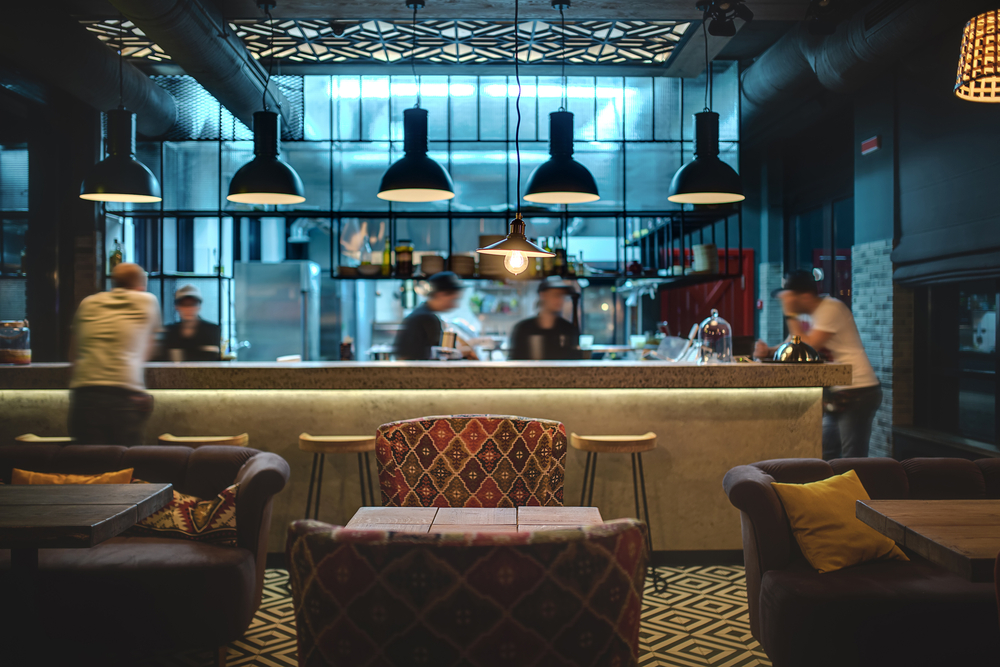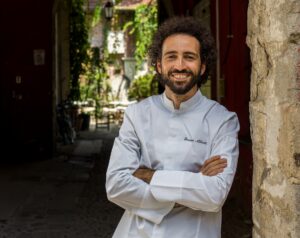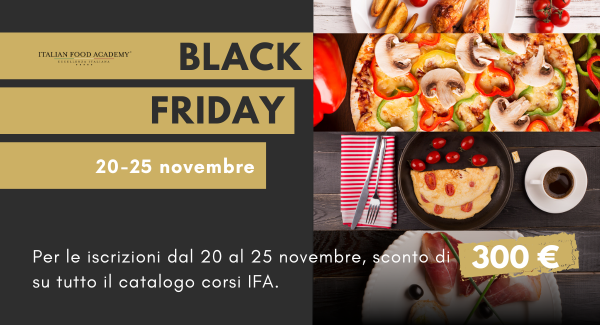We are pleased to kick off a monthly column on the Food Marketing, which will see guest blogging by Italian Food Academy Of the valuable content signed by Riccardo Binaco, expert in Digital marketing for the restaurant industry and author of the ebook Digital Food Marketing to acquire and retain customers for your Restaurant. On his website riccardobinaco.it you can find valuable tips, information and strategies for acquiring and retaining customers by leveraging digital channels.
Edited by Riccardo Binaco
333.640! This was the number of active enterprises in the Food and Beverage sector in 2019 in Italy. Restaurants, agriturismi, pizzerias, bars, wine bars: 25% of these 333,640 businesses close within one year of opening. 50% of these businesses close within three years of opening. 57% of these businesses close after five years of opening. (Fipe Annual Report, January 2020). All this was happening before the pandemic.
In 2020 there were 9,190 new restaurant openings, compared to 22,250 closures outright.13,060 restaurants and bars in Italy: These figures ( Fipe/Confcommercio) are alarming, but we know there is a pandemic involved. That is why I consider the 2019 data more reliable. It is clear from these data the difficulty of restaurateurs opening a new business.
Now try to answer these three questions:
- Do you think this is all due to the poor level of Italian cooks and chefs?
- Do you think it is due to the poor quality of food being served in restaurant tables in Italy?
- Do you think it is due to the difficulty in sourcing quality raw materials?
I guess your answer is no! And it is the right answer. In this, Italy is among the world's excellences. But then why do new restaurant businesses in Italy struggle so much? Because while there is an excellent level of technical preparation, it lacks the organizational, management, communication and marketing skills needed to limit business risk-in a word, it lacks the skills of Food Marketing for Catering.
So if you want to avoid common mistakes, let's see together what are the 5 Things to do before opening a restaurant in Italy. Once you have clarified these 5 things, you will also find it much easier to write the Business plan for your restaurant business.
Target, Concept, Location, Staff, Communication
1- Target and Competitor
"Don't look for customers for your products, look for products for your customers." With this phrase Seth Godin (considered the best marketer in the world), means to first study what the need of a particular market is and consequently create the product that meets that need.
If you decide to apply this concept in the world of the catering, then the first thing to do before open a restaurant, è study the target audience in a given geographical area. You can analyze the target customers of a single city or an entire nation, depending on how you plan to develop your restaurant business.
You will need to choose a specific city and area in which you will open your restaurant. Having taken this important first step, you will need to conduct market research to understand who lives in that area, who works there, who frequents it (tourists, residents, etc.).
Having done this, study what are the "food and wine needs" of these types of people or a portion of them and at the same time also conduct an analysis of competitors in that specific city. The more detailed information you can get about target customers in that area and their competitors, the easier it will be for you to make the right decision.
2- Diversifying concept and idea
Following the philosophy by Seth Godin, now you have to devise and designing the concept of your restaurant. By concept I mean, the ideal type of restaurant for that target customers you have identified. The concept is an idea that is then developed concretely by putting together a number of aspects such as: the choice of logo, the internal design, the choice of menu, the ambiance you create in the restaurant, the way you communicate online and offline, and the selection and training of staff. You will find it easier to create a concept if you are clear about the mission of your new brand.
Let's look at the missions of two very famous brands:
KFC: Selling food in a fast and friendly environment that appeals to pride and health-conscious consumers
Coke: Refreshing the world - in mind, body and spirit...inspiring moments of optimism through our brands and actions. Creating value and making a difference wherever we engage.
Everything about your new restaurant must be consistent with your chosen concept and mission statement.
Another very important aspect is that of the diversifying idea, which is that feature or set of features that diversifies you from your competitors. The concept itself, already may represent the diversifying idea, but this is not always the case.
Try answering these questions:
- Why should a customer come to my new place?
- Why should you prefer my venue to that of my competitor?
- What does my new restaurant offer that is "objectively" different from others?
Subjective answers such as...we eat better, we're better, we're nicer, it's the nicest place, etc., are not valid.
Here is an example of a diversifying idea that I share with you directly from my food marketing blog riccardobinaco.it.
Case study Pizzeria
Near Rome, in the early 2000s, a pizzeria opened with about 200 covers inside. The concept and differentiating idea were as simple as they were innovative, especially at that time and in that particular area of the Roman suburbs.
The owners decided to go all in on their Roman pizza alla pala recipe and offer it in a "pizza no stop" format. For years they focused only on producing a crisp, good, digestible pizza, offering it at popular prices. Customers who finished their pizza shovel, could order another one and so on, with no price added to the established fixed menu. This allowed the Rosso Peperoncino brand to enjoy great success and still be, after 20 years, the most popular pizzeria in the area. Very often a simple, well-developed idea turns out to be a winner.
3- Location
Now that you have all the information you needed and have planned your business in detail, all that remains is to choose the venue in which to open and develop your concept. The location, visibility, and size of the venue are key aspects wave not to be underestimated. The location must be taken care of in every detail, both inside and outside the restaurant. Everything should always be consistent with the chosen concept/format.
The experience the customer will have inside the restaurant will depend a great deal on this. Most customers who enter your new establishment will do so to have an experience (Food experience) and not simply to feed themselves.
Every customer has an experience inside a restaurant through all 5 senses: sight, hearing, smell, touch and taste.
This is precisely why it is necessary to create the right ambience (between colors, furniture, lights, staff uniforms), if necessary better limit rumblings with soundproof panels, avoid having unpleasant smells spread from the kitchen, maintain an impeccable level of cleanliness and finally create dishes with a unique taste. Attention to all these details contributes to a pleasant experience for your customers and increases the chance of loyalty over time.
Location, great service and well-executed dishes will give your customers a feeling of well-being and they cannot help but return and become true sponsors of your restaurant, activating wonderful word-of-mouth advertising.
4- Staff
The selection and related staff training is perhaps the most crucial aspect in the success of your new restaurant. The most common mistake, is to invest a lot of time and resources on other aspects and not pay proper attention to staff selection. For better or worse, your staff will make all the difference. Here are some tips for selecting staff:
1- In recruitment ads, try to be very detailed both in skill requirements and in briefly explaining the restaurant concept. This filter is necessary to receive fewer interview requests, but more aligned with your real needs. You will avoid wasting time and money on tests that will lead to nothing.
2- In interviews, try to assess the candidate's real motivations for working for you, do not be misled by a list of previous experience, and always check the veracity of what is being extolled in the resume. Evaluate the aptitude for the task you will have to perform. To do this you can use various psycho-aptitude tests, which will give you basic indications of the candidate's actual aptitude in the short, medium and long term.
3- Training. You can't expect to open, without first doing at least twenty days/one month of break-in with the full staff. Yep, before you open to the general public you need to ensure your staff has a period of training and working at a low level behind closed doors (Relatives, friends, etc.). This is a key aspect to avoid nasty surprises when opening and getting off to the worst start.
5- Communication
In the business plan drafted before you open your restaurant, there must also be the marketing strategy and related communication strategy. Communication is the common thread of the other 4 points we have discussed so far. Now is the time to make yourself known to the target customers you have identified and to communicate the mission and concept of your new restaurant. Communication should start at least 3 months before opening, developing a storytelling that captures users' attention and raises interest around the new Brand.
The Tone of voice of communication (formal, informal, ironic, detached, engaging, etc.), must be consistent with the chosen concept, and the content must convey and convey the experience that customers will have inside the venue. Making people imagine a Food Experience consistent with what they will actually experience, without creating false expectations. All this must be done through coordinated graphics between the various digital channels (website, social, email marketing), traditional channels (Street billboards, restaurant sign, flyers, etc.). Sometimes, if not well designed, all these aspects of communication create an expectation that is not consistent with the real experience inside the restaurant. The result is to have acquired customers who expected something else and therefore will leave your restaurant dissatisfied.
This triggers word of mouth and negative reviews that could jeopardize the successful start-up of the business.
I hope I have helped you avoid common mistakes and bring attention to key aspects to consider before opening your restaurant. Well begun is half done! So goes the proverb, a product of folk wisdom. If you have already opened one or more restaurants and have other tips to share with us, please post them in the comments.
Good Business!








